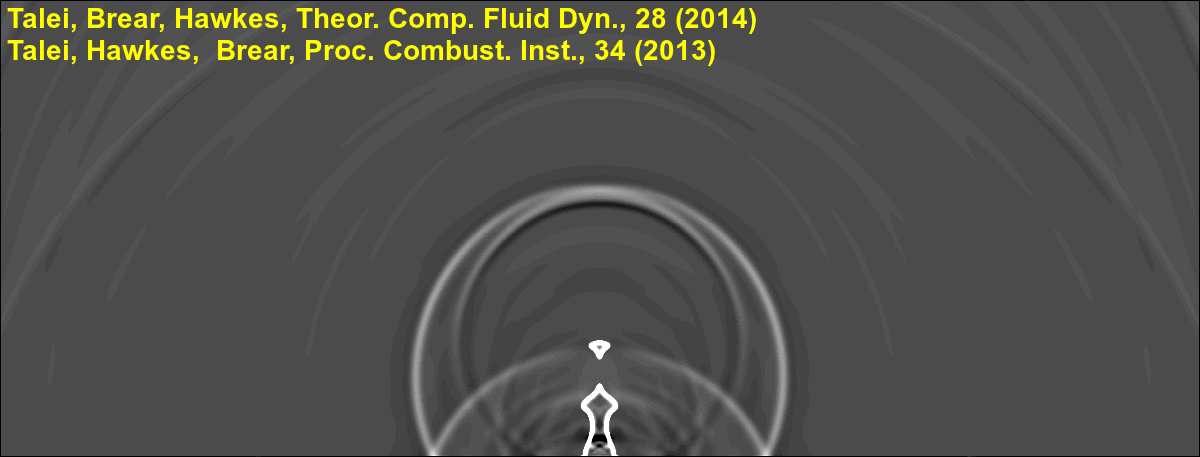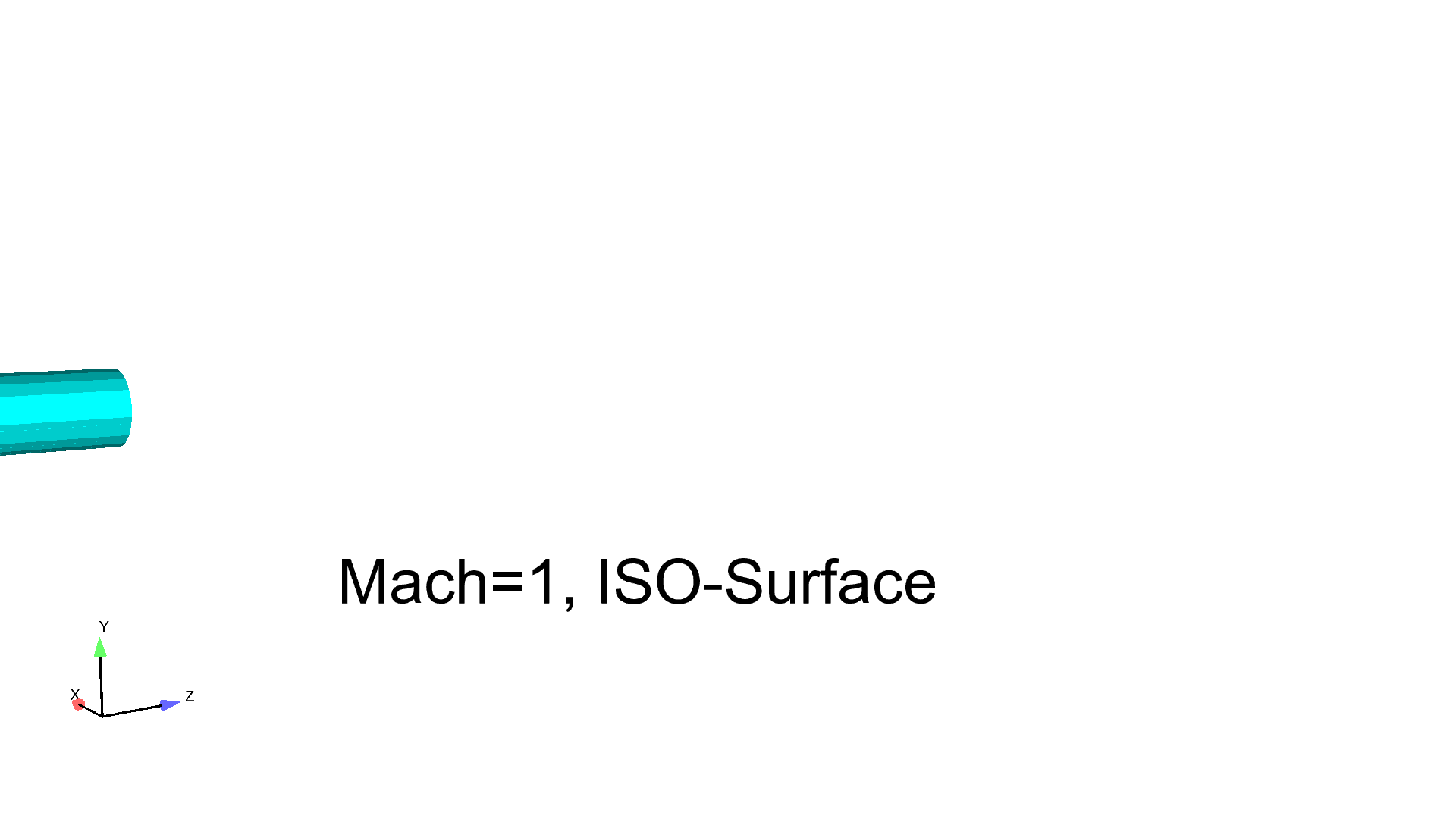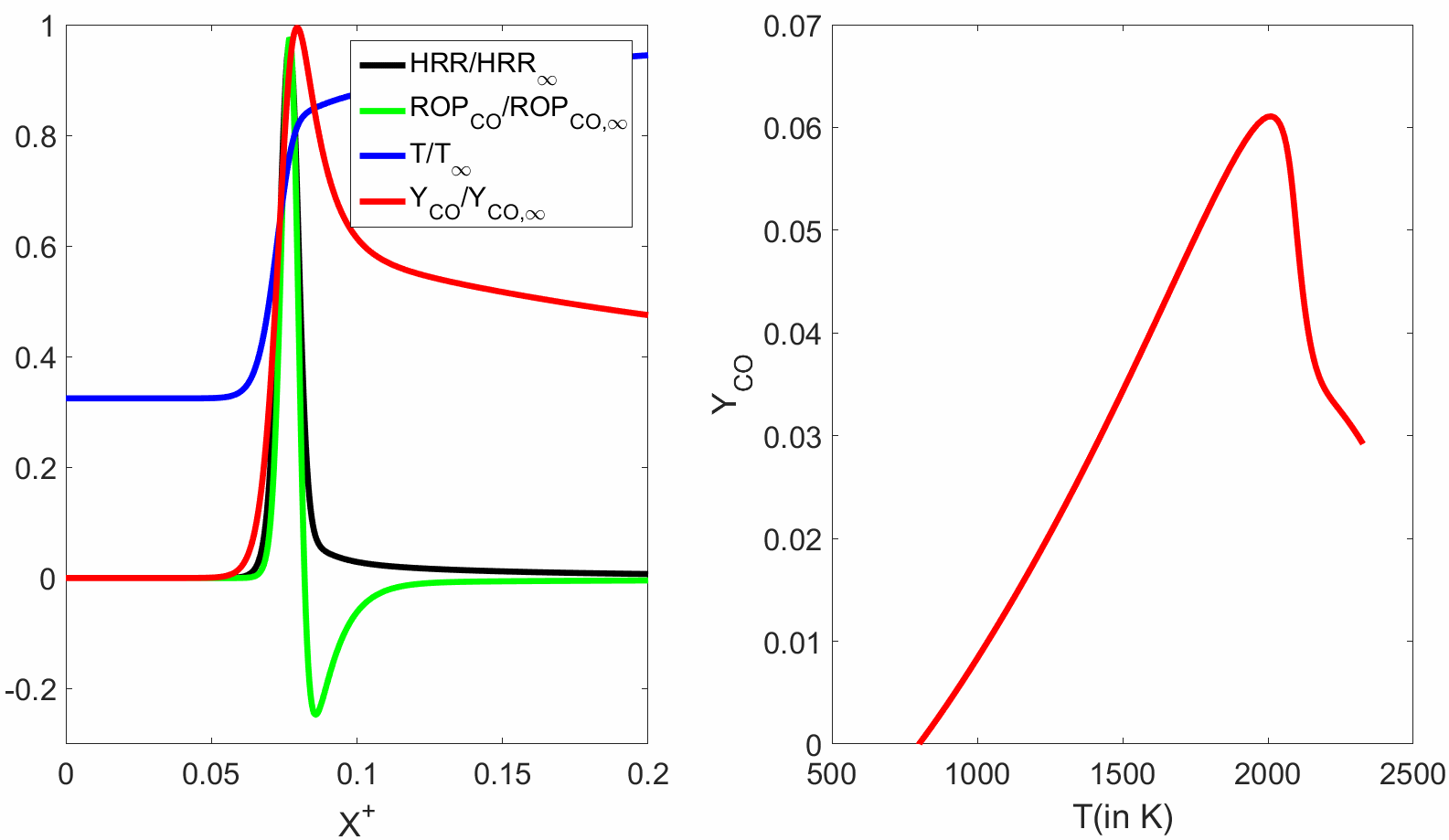
Dr Mohsen Talei
Senior Lecturer | ARC DECRA FellowDepartment of Mechanical Engineering
The University of Melbourne, VIC 3010, Australia
T: +61 3 9035 4026
E: mohsen.talei@unimelb.edu.au

Mohsen's research is in the broad area of energy and includes numerical and theoretical investigations of turbulent flows, related to gas turbines and reciprocating engines. See below for some examples.
Sound generation by premixed flames
Combustion is a significant source of noise pollution. Combustion-generated sound also plays a central role in the stability of many engineering devices, such as industrial burners, gas turbines and rockets. The ongoing pursuit of quieter and cleaner combustion in these devices provides a continued need for further refinements in our understanding of combustion generated sound. The rate of change of heat release is commonly considered as a major source of noise in combustion. One mechanism affecting this rate of change, and hence sound generation, is so-called flame annihilation. Animation of the dilatation field (∇.u where u is the velocity) of an acoustically forced laminar premixed flame over one forcing cycle, is shown below. This animation demonstrates that flame annihilation events (detachment of the flame tip from an elongated filament and burning out of the resulting island) are significant sound sources. Note that the white colour represents both the flame and sound waves.
 |
Natural gas direct injection
Compressed Natural gas (CNG) is commonly used as an alternative fuel for different applications due to low carbon emissions, attractive cost, availability, high antiknock resistance and extended lean flammability. Port fuel injection (PFI) and direct injection (DI) are two typical injection methods in natural gas engines. However, DI CNG engines tend to have improved volumetric efficiency and torque capability over PFI equivalents. DI injection strategy creates highly turbulent, underexpanded CNG jets. Recently, the advancement in computing power has made Large-Eddy Simulations (LES) of such flows feasible. This has the advantage of capturing details of supersonic flows with numerous expansion shocks more accurately than Reynolds-Average Naiver Stokes (RANS) calculations. Although simulation tools like LES are able to characterize salient features in DI CNG flows, existing literature does not adequately explain the effects of the internal flow and geometry of an injector on the downstream flow of a CNG jet. In our group, LES is employed to study the effects of changing the ratio of the nozzle total pressure (P0) to the ambient static pressure (P∞), defined as nozzle pressure ratio (NPR) on the transient development of the highly underexpanded natural gas jets.
 |
CO emissions due to flame-wall interaction
Flame-wall interaction (FWI) is observed in various combustion systems such as gas turbines and reciprocating engines. In this process, the flame quenches at a distance away from the wall thereby leading to incomplete combustion. This can be a significant source of emissions such carbon monoxide (CO). Moreover, the current trend towards downsizing, i.e. increasing the power generated per unit volume of the power system, increases the significance of FWI. The contribution of flame-wall interaction towards overall emissions (CO in particular) is not well understood. The figure below shows the animated plots of a one-dimensional head-on quenching (where the flame propagates normal to the wall). The heat release rate (HRR), rate of production of CO (ROPCO), temperature (T) and the mass fraction of CO (YCO) are plotted against the distance from the wall on the left. The right-side plot shows the relation between CO mass fraction and temperature. The increase in HRR, and YCO near the wall (X+=0) is evident in both plots.
 |